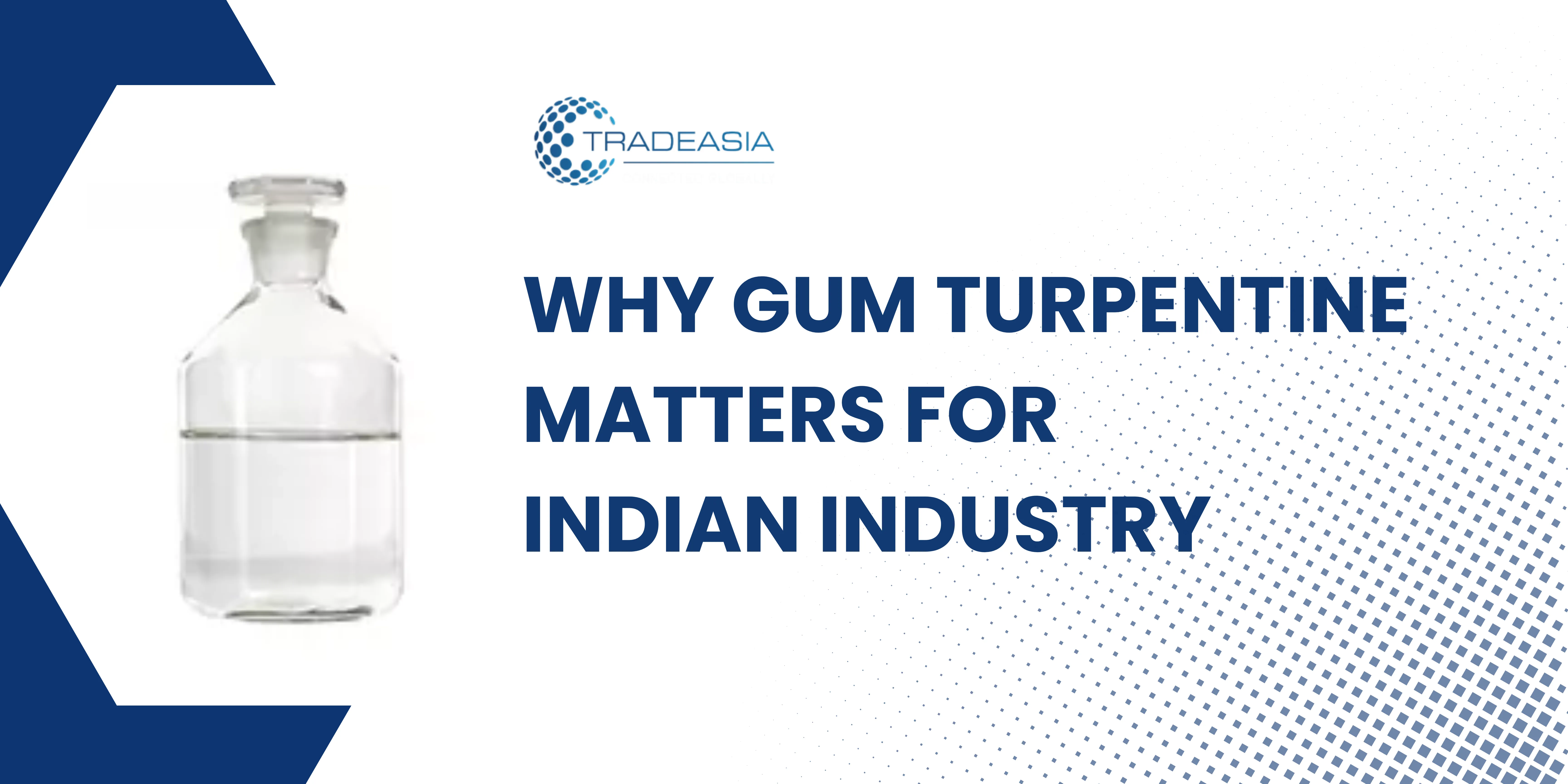The Indian textile industry is one of the largest and oldest industries in the country, contributing significantly to the nation’s economy. With the increasing demand for high-quality fabrics and advanced textile processing techniques, manufacturers are continuously exploring new chemical solutions to improve efficiency and sustainability. One such versatile and eco-friendly chemical that has gained attention in textile manufacturing is Gum Turpentine. Extracted from pine resin, this organic solvent has a broad range of applications in textile processing, from dyeing and printing to fabric finishing and maintenance.
In this article, we will explore how Gum Turpentine plays a vital role in the Indian textile sector, its chemical properties, and how its unique characteristics contribute to improving textile quality and durability.
Overview of the Indian Textile Industry
India’s textile industry is a global powerhouse, contributing around 7% of the country’s industrial output and accounting for 15% of total exports. The industry employs over 45 million people directly and serves as a critical sector for economic growth.
The textile industry in India is highly diverse, covering:
✅ Cotton, silk, and wool production
✅ Synthetic and blended fabric manufacturing
✅ Dyeing, printing, and finishing technologies
With increasing global demand for eco-friendly textiles, manufacturers are looking for natural solvents and resins that can enhance textile processing while reducing environmental impact.
This is where Gum Turpentine comes into play as a sustainable and effective chemical solution.
What is Gum Turpentine?
Gum Turpentine is a natural solvent derived from the distillation of pine resin. It is composed primarily of terpenes, including α-pinene and β-pinene, which provide unique chemical properties useful for industrial applications.
Key characteristics of Gum Turpentine include:
✅ Strong solvent ability – dissolves dyes, resins, and waxes effectively.
✅ Fast evaporation rate – helps in quick drying of coated textiles.
✅ Antimicrobial properties – prevents bacterial and fungal growth on fabrics.
✅ Hydrophobicity – enhances waterproofing in textile coatings.
Due to these properties, Gum Turpentine is widely used in dyeing, textile finishing, and fabric maintenance.
Chemical Properties of Gum Turpentine
The chemical structure of Gum Turpentine makes it an ideal ingredient in textile processing. Its properties include:
✅ Low viscosity – Helps in deep penetration of textile fibers.
✅ Good miscibility – Easily mixes with dyes, resins, and coating agents.
✅ Non-polar nature – Works efficiently with synthetic and natural fabrics.
✅ Heat resistance – Ensures stability in high-temperature textile treatments.
These features make it indispensable in the Indian textile industry for applications ranging from dye fixation to fiber strengthening.
Applications of Gum Turpentine in the Textile Sector
a. Dyeing and Printing Processes
Gum Turpentine acts as a carrier solvent in textile dyeing, helping:
- Better color penetration into fabric fibers.
- Uniform dye distribution for consistent shades.
- Improved color fastness, ensuring longer-lasting prints.
It is commonly used in fabric printing, where it aids in enhancing print adhesion and reducing ink bleeding.
b. Textile Finishing and Coating
Textile finishing enhances the feel, durability, and functionality of fabrics. Gum Turpentine plays a key role in:
- Waterproofing treatments for outdoor textiles.
- Anti-wrinkle coatings for synthetic fibers.
- Softening agents to improve fabric texture.
c. Solvent for Textile Resins and Waxes
Many textile products require resin-based coatings to increase strength and elasticity. Gum Turpentine serves as an effective solvent for:
- Polymer-based textile finishes.
- Textile wax treatments for waterproofing.
- Binders in synthetic fabric processing.
d. Role in Fabric Cleaning and Maintenance
Gum Turpentine is also used in industrial textile cleaning, helping in:
- Removing oil stains from raw fabrics.
- Cleaning textile machinery efficiently.
- Acting as a biodegradable solvent for textile waste processing.
Advantages of Using Gum Turpentine in Textiles
✅ Eco-Friendly Alternative – A sustainable option over petrochemical solvents.
✅ Enhances Fabric Longevity – Reduces wear and tear in textile production.
✅ Cost-Effective – Helps reduce production costs while improving quality.
✅ Improves Chemical Processing – Ensures better dye penetration and finishing.
Market Demand for Gum Turpentine in Indian Textile Industry
With India's growing emphasis on sustainable textile production, the demand for natural pine derivatives is on the rise. Major textile hubs like Gujarat, Maharashtra, and Tamil Nadu are adopting green chemical solutions, boosting the market for Gum Turpentine.
The increasing popularity of organic and eco-friendly textiles further enhances the potential for Gum Turpentine in textile manufacturing.
Challenges and Future Outlook
Challenges in large-scale adoption include:
- Availability of High-Quality Gum Turpentine – Dependence on pine resin production.
- Regulatory Approvals – Compliance with textile safety standards.
- Industry Awareness – Educating textile manufacturers about its benefits.
However, as India pushes for eco-conscious manufacturing, Gum Turpentine is expected to see higher adoption in textile processing.
Conclusion
Gum Turpentine is a valuable chemical in India's textile sector, playing a crucial role in fabric processing, dyeing, finishing, and maintenance.
As the industry moves towards sustainability, Gum Turpentine presents a natural, efficient, and cost-effective alternative for textile manufacturers.
For high-quality Gum Turpentine supplies, visit:
? Gum Turpentine Product Page
? Pine Derivatives in Industry

Leave a Comment